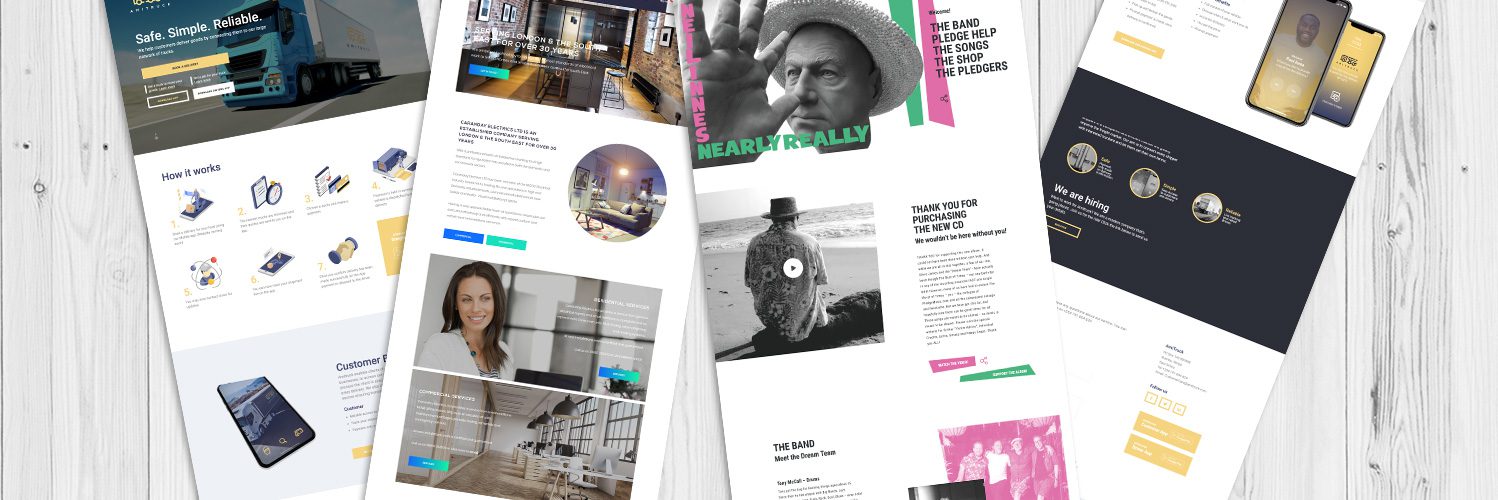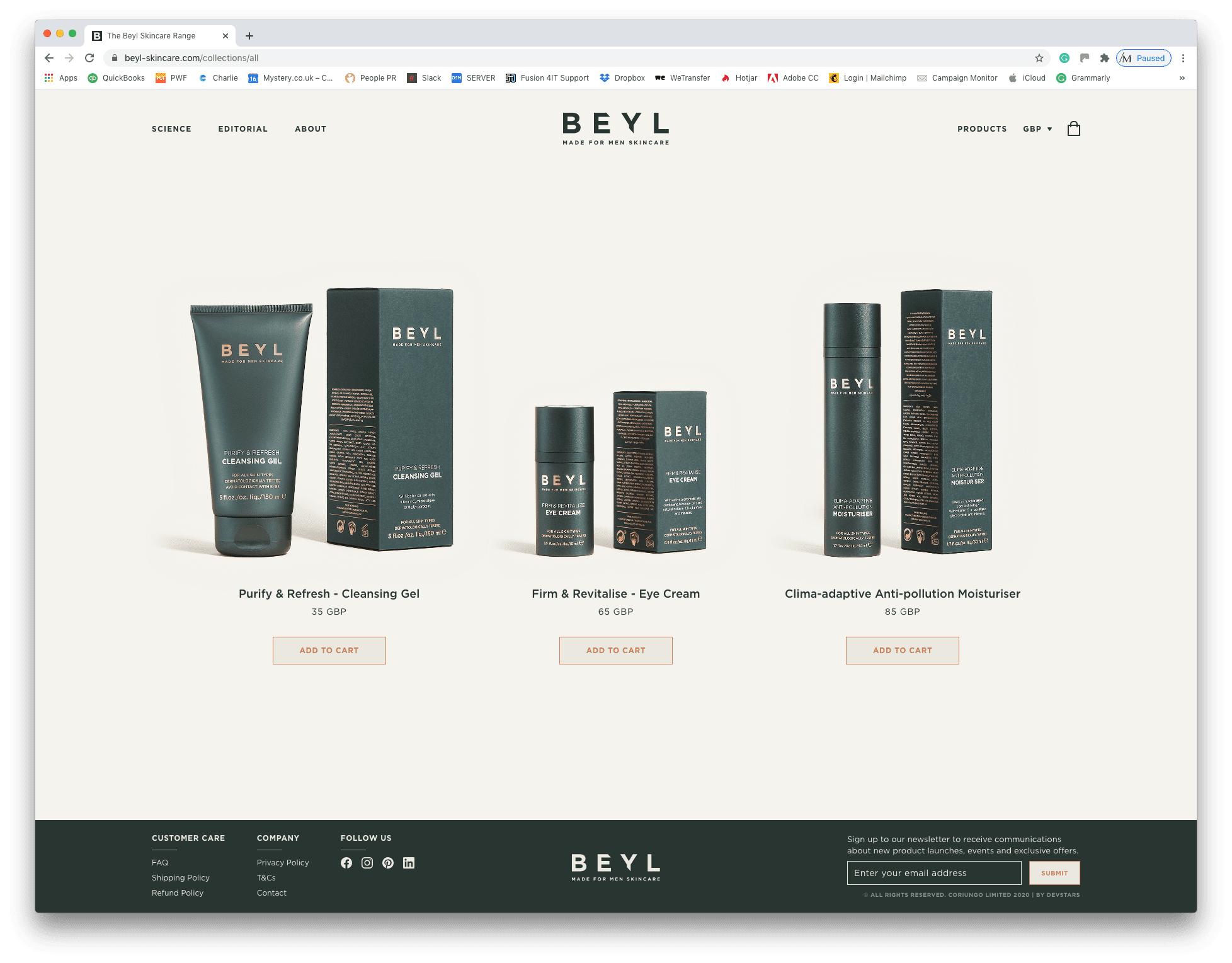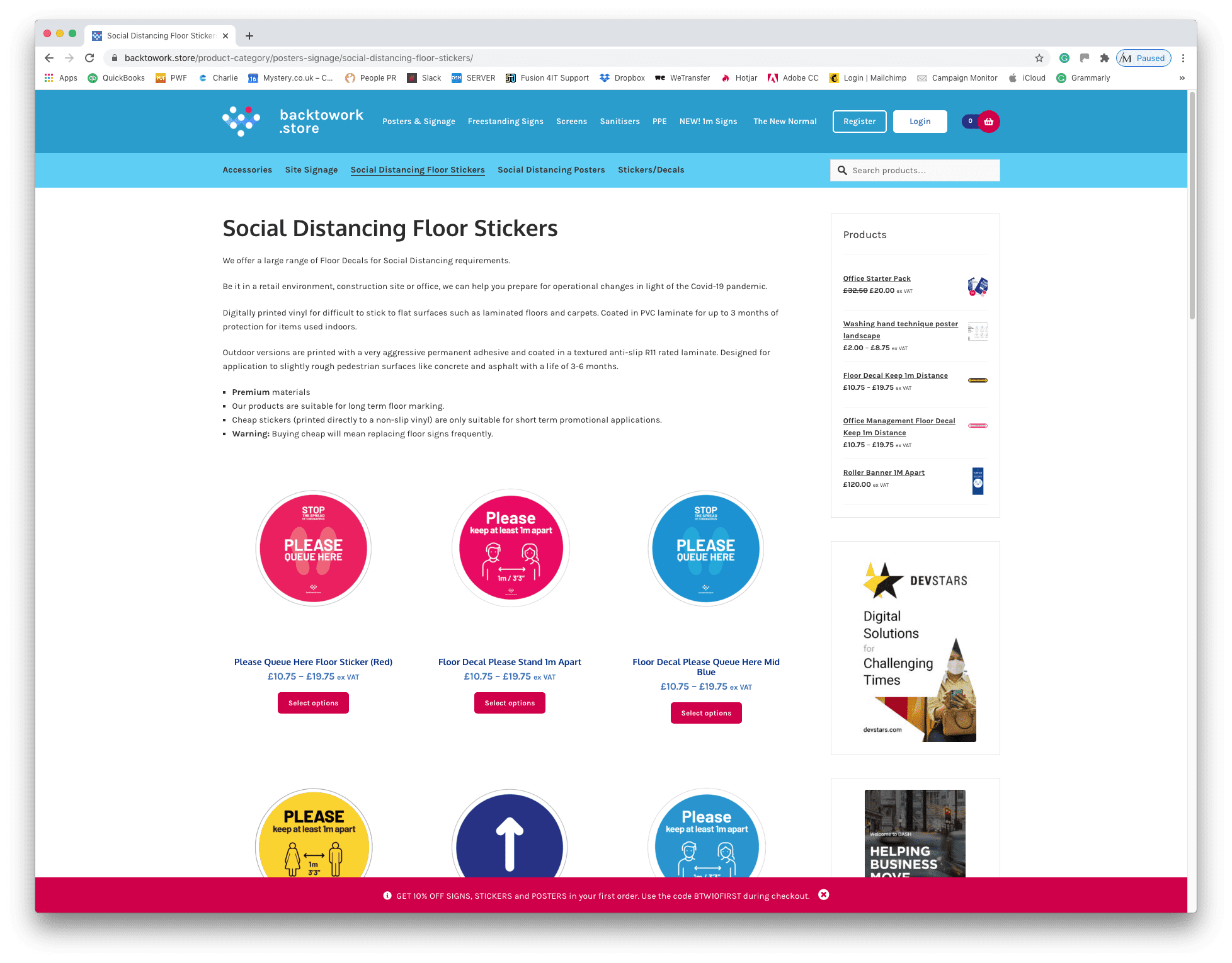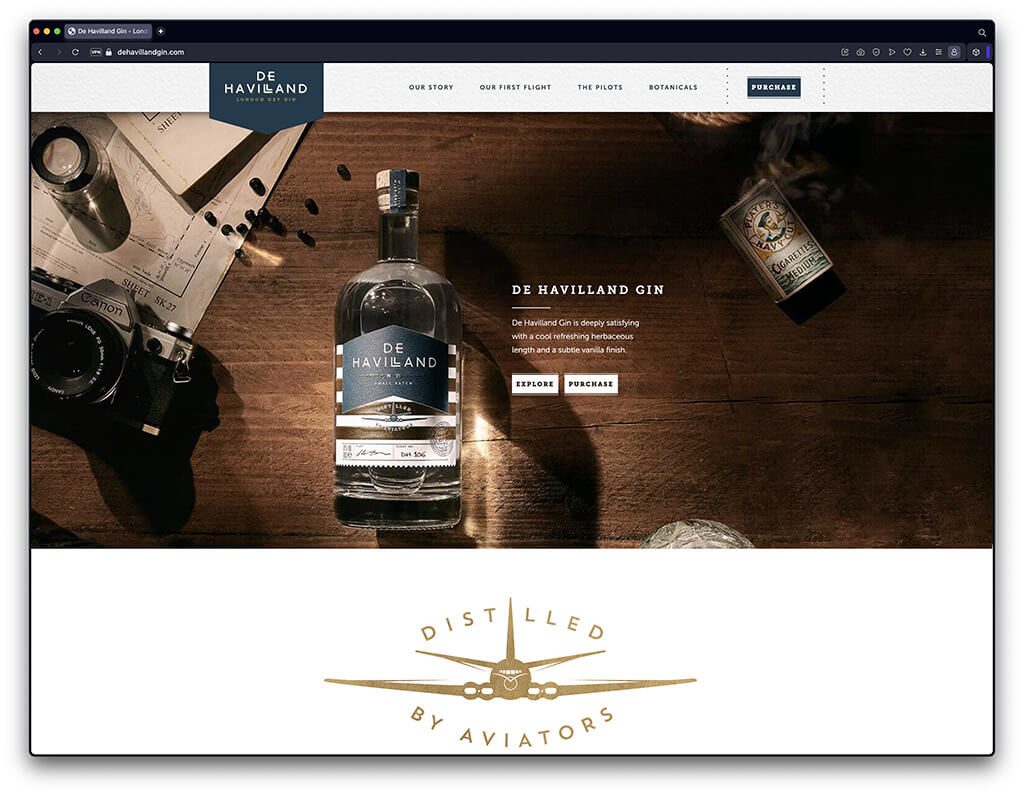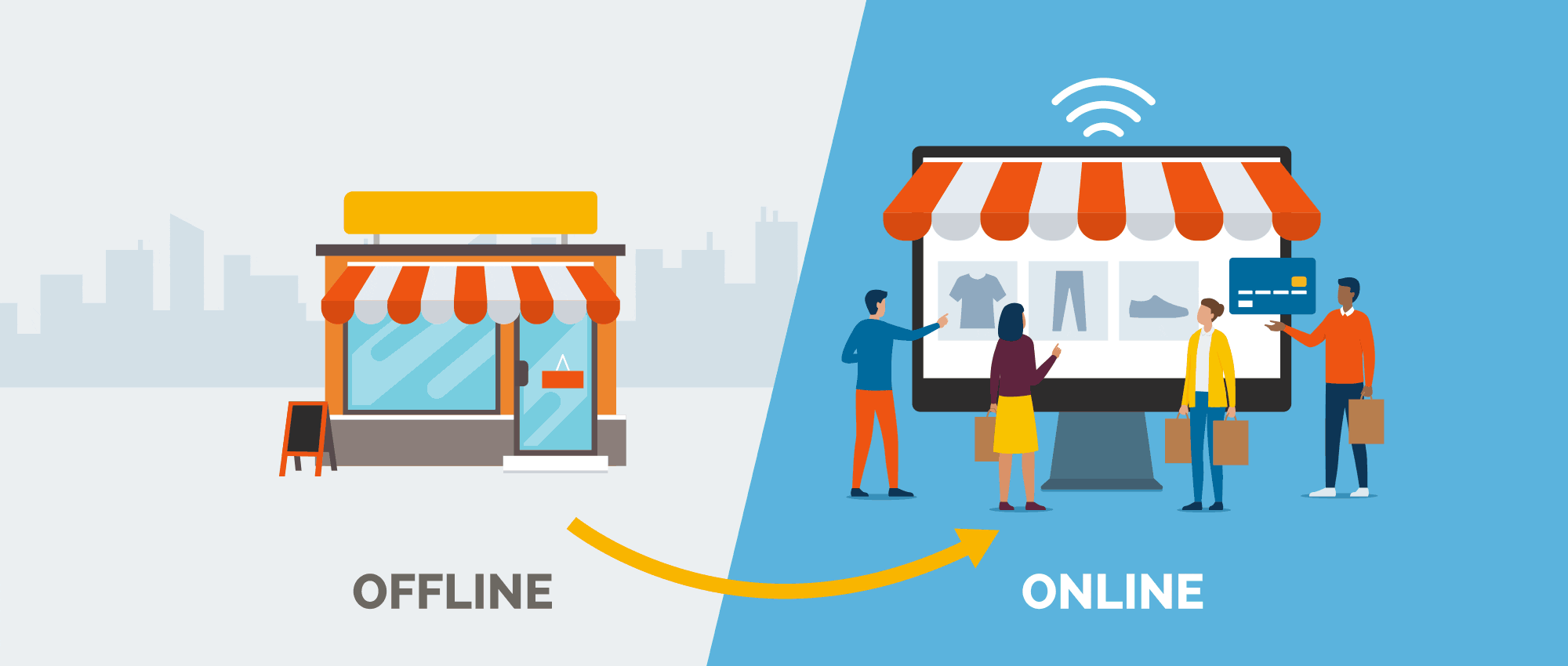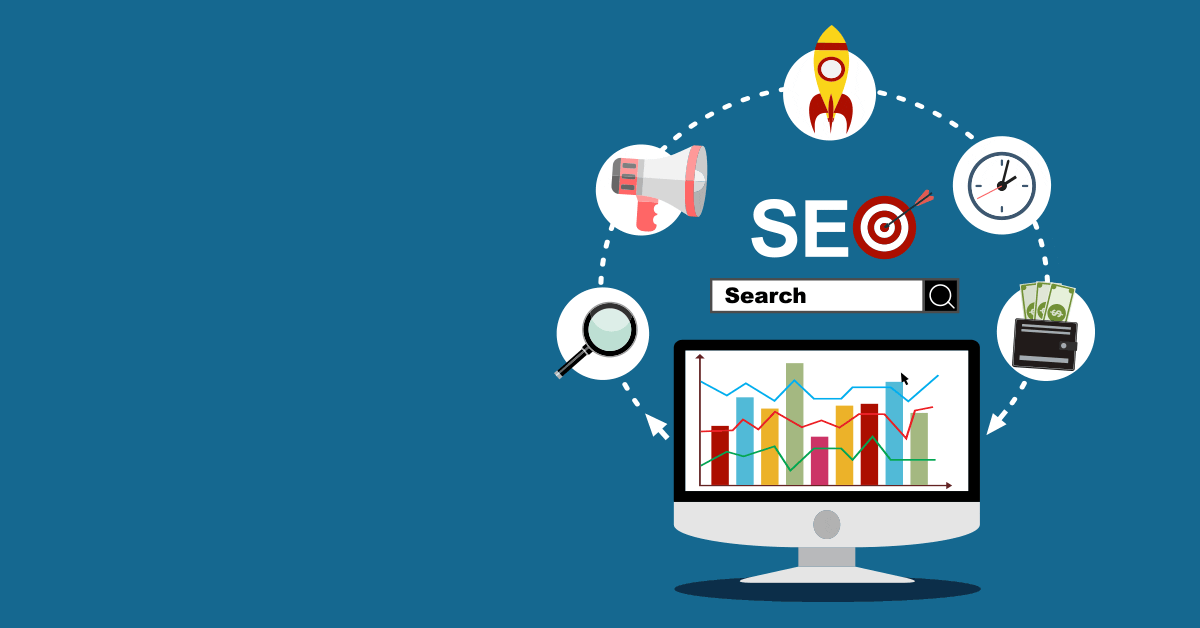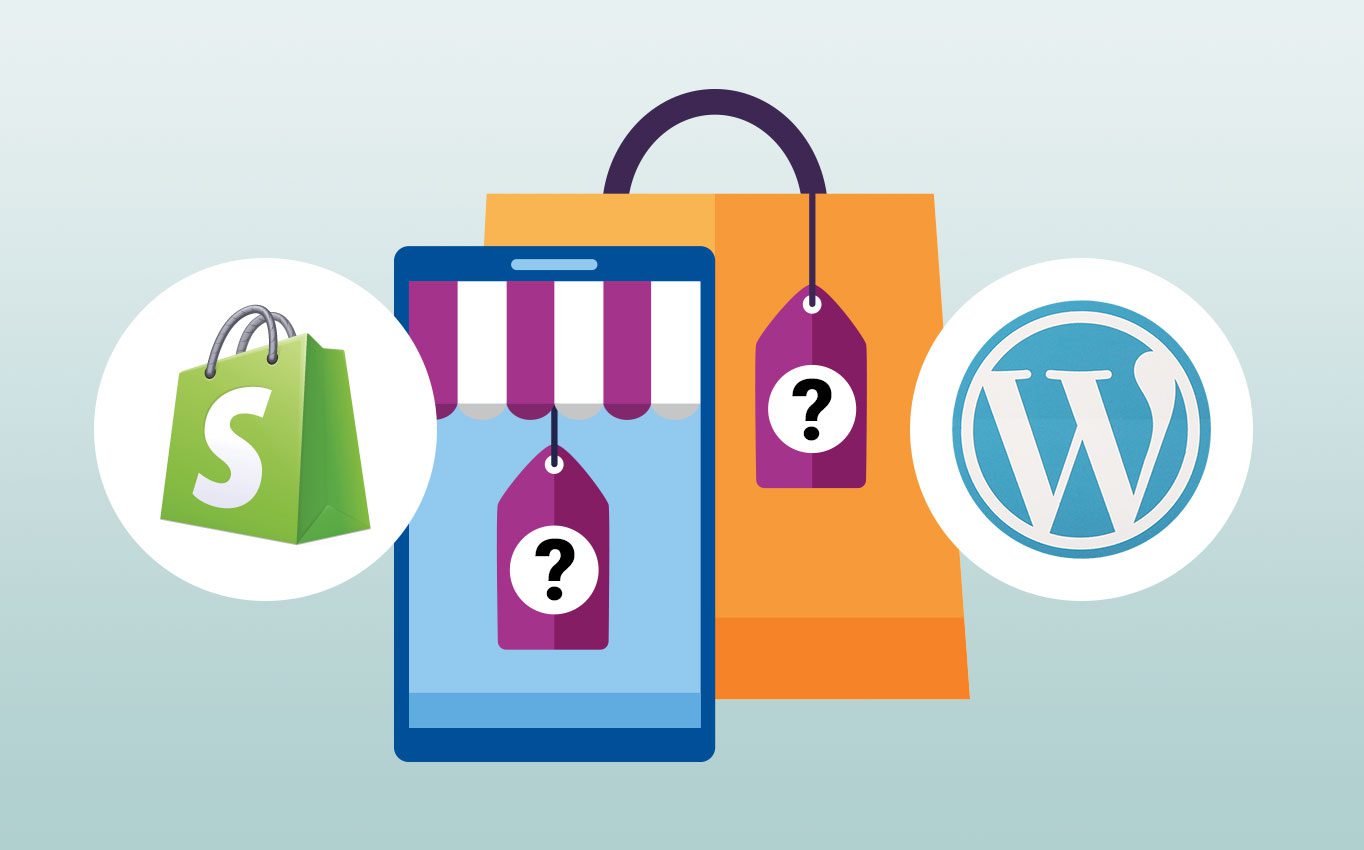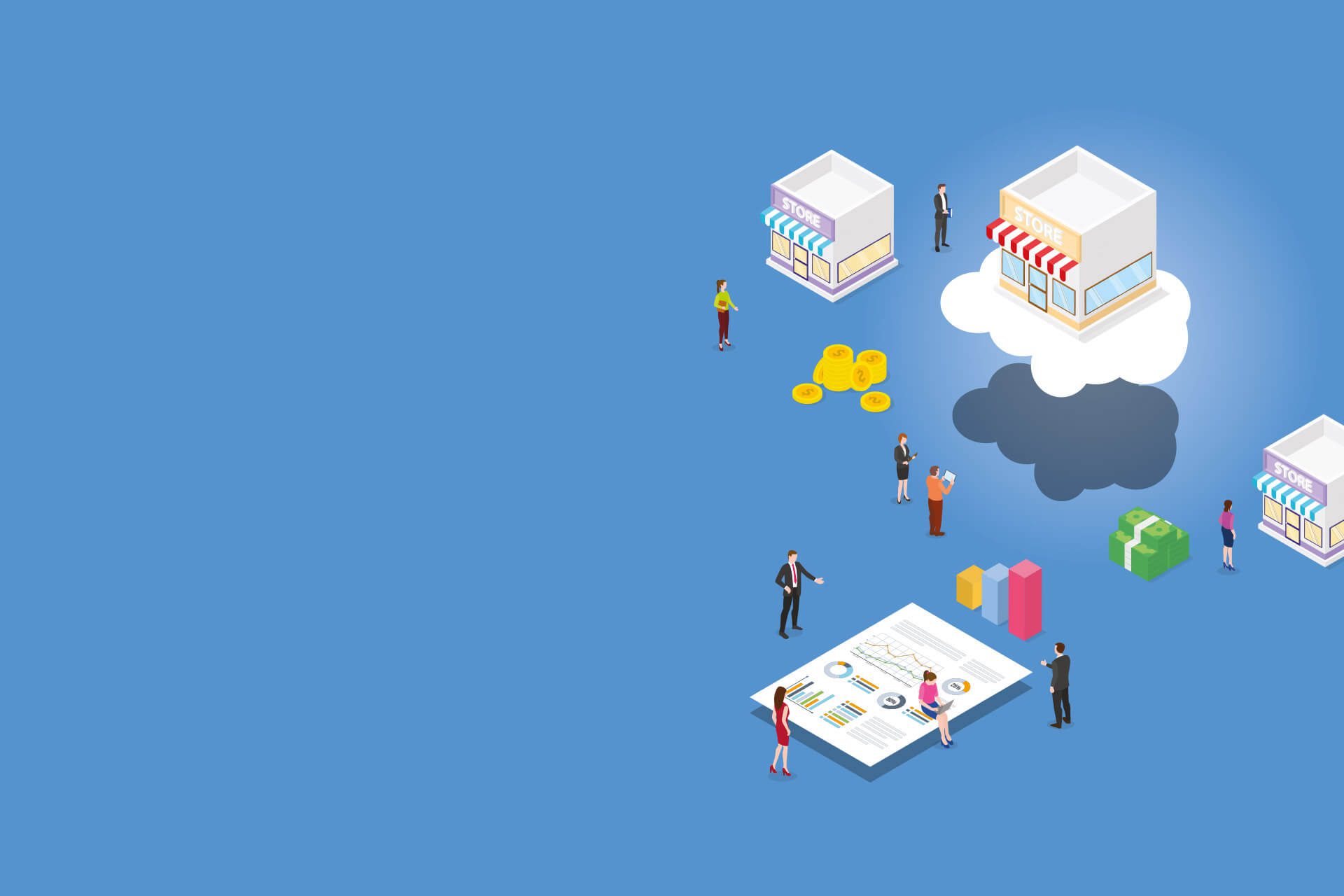
Article
How much does ecommerce website design and development cost?
PUBLISHED:September 24, 2020
UPDATED:November 8, 2023
The digital landscape has witnessed an eCommerce boom, and if you're a business owner, you're probably contemplating the importance of having a robust online presence. An eCommerce store can be a game-changer for your business, but one of the most critical questions that might be haunting you is, "How much does eCommerce website design and development cost?" In this article, we’ll explore the factors that influence the cost of building an eCommerce website and help you make an informed decision.
Factors Influencing eCommerce Website Costs
Website Complexity
The complexity of a website’s structure, navigation, and functionality plays a pivotal role in determining the overall cost of eCommerce web design and development. Simple websites with minimal features tend to be more cost-effective compared to their complex, feature-rich counterparts. This is primarily due to the extensive time, resources, and expertise required to create and maintain intricate web structures.
In the realm of website complexity, a simple site might consist of basic web pages with straightforward navigation, limited interactivity, and minimal design intricacies. Such websites are relatively quick to build, and their uncomplicated nature translates into lower costs.
In contrast, complex websites encompass intricate databases, sophisticated eCommerce software, interactive features, and elaborate design elements. These multifaceted functionalities demand in-depth planning, specialized coding, and more extended development timelines, all of which contribute to higher expenses.
Design Intricacy
An appealing website design is a critical factor in capturing and retaining the attention of online visitors. It serves as the digital storefront of your business and creates the first impression. A visually pleasing design engages users and conveys professionalism and trustworthiness, influencing their decision to explore further or bounce from your site.
As the intricacy of the design increases, so do the costs involved in its creation. Elaborate designs often demand the expertise of a skilled web designer who can craft unique, eye-catching visuals, custom illustrations, or complex layouts. Moreover, the development of intricate design elements requires additional time and resources.
Sophisticated designs may involve intricate animations, interactive features, or 3D graphics, all of which necessitate specialised programming skills and, consequently, an upsurge in development costs (see below). Furthermore, the intricacy of the design can lead to longer development timelines, affecting project schedules and budget planning.
While an intricate design can set your website apart and enhance user engagement, it’s essential to strike a balance between aesthetics and budget constraints. Careful consideration of your target audience and the nature of your business can guide the level of intricacy in the design, ensuring that the investment in visual appeal aligns with the objectives of your ecommerce project and financial resources.
Development Platforms
The choice of a development platform is a pivotal decision in the website development process and significantly impacts the associated costs. When deciding between open-source ecommerce platforms like WordPress or Magento and proprietary solutions, there are various cost-related considerations.
Open-source platforms are generally known for their cost-efficiency, as they are free to use. However, the development cost can increase due to the need for customisation and additional features. Businesses may require a development team to tailor the open-source software to their specific needs, and these modifications often entail additional costs. Moreover, ongoing maintenance, security updates, and compatibility checks can add to the long-term expenses of open-source platforms.
On the other hand, proprietary platforms such as Shopify Plus often come with licensing fees or subscription costs. While these platforms may offer more out-of-the-box functionality, they can be pricier upfront. However, they may require less customisation, potentially resulting in cost savings during the development phase.
The choice between open-source and proprietary platforms should align with the unique requirements and budget constraints of the business. It’s important to consider the long-term implications, as both options have their own set of costs, and finding the right balance between functionality and affordability is key to a successful website development project.
Customisation Needs
Customised features, plugins, and extensions play a crucial role in tailoring a website to meet specific business needs and user requirements. While they enhance functionality and provide a unique user experience, their inclusion can increase development costs.
Custom features are designed from the ground up to serve a particular purpose on the website, such as a unique checkout process or a specialised content management system. Developing these features demands time and expertise, contributing to higher expenses. Moreover, they require rigorous testing to ensure they function seamlessly, which can extend project timelines.
Plugins and extensions are often used to add extra functionality to a website. While many off-the-shelf plugins are available, businesses with unique demands often require custom solutions. Developing custom plugins or extensions involves coding from scratch or extensive modification of existing ones, incurring additional costs.
It’s essential to carefully assess the necessity for the custom development of features, plugins, and extensions during the project planning phase. While they can enhance a website’s capabilities, they should be balanced against the budget and the project’s timeline. Properly scoped and justified customisations can be a valuable investment, but overextending on these elements can lead to unforeseen expenses and delays.
Integration Requirements
Integrating external systems, like payment gateways and inventory management, is often a necessity for eCommerce websites to function efficiently. However, this crucial aspect of website development can introduce additional costs.
Payment gateway integration, for example, involves linking your website with a secure and reliable payment processing system. This ensures smooth transactions and a secure shopping experience for your customers. Depending on the complexity of the payment processor, the integration process can vary in terms of effort, time, and associated costs. Some gateways offer ready-made plugins, which can simplify the process and reduce expenses, while others may require custom development work.
Inventory management integration is essential for tracking product availability, ensuring accurate stock levels, and preventing overselling. This integration is especially vital for eCommerce businesses with a large and frequently changing inventory. The cost of inventory management integration depends on the sophistication of the system, the number of products, and the level of automation required.
It’s crucial to budget for these integrations during the website development process and to select solutions that align with your business’s specific needs and resources. While integrating external systems may incur additional costs, the benefits in terms of streamlined operations and improved customer experiences often justify the investment.
E-commerce Features
The specific eCommerce features you incorporate into your website are pivotal in shaping both its functionality and overall budget. Features such as shopping carts, product catalogues, user reviews, and many others play a vital role in creating a seamless and engaging online shopping experience for your customers.
Shopping cart functionality, for instance, is fundamental for eCommerce sites, allowing customers to select and manage their purchases. The complexity of the shopping cart, including features like wish lists, discount codes, or saved carts, can influence costs. A simple cart is more budget-friendly, while an advanced one requires additional development work.
Product catalogues are essential for displaying your offerings. The size and complexity of your catalogue, along with features like product variations, images, and detailed descriptions, can impact both development and content creation costs.
User reviews and other interactive features enhance user engagement and trust. However, building and integrating these features, including moderation and spam prevention, can incur additional expenses.
The key to managing costs effectively is to identify and prioritize the eCommerce features that align with your business goals and customer needs. It’s essential to strike a balance between offering a rich user experience and staying within budget constraints. So, if you have a tight budget, it’s best to stick to a small list of relatively basic features, and then, as the business grows, you can invest in more complex advanced features to increase conversions.
Hosting and Domain Costs
Securing a reliable hosting plan and domain name is a critical element of website development, and it often constitutes a substantial cost. Hosting services provide the server infrastructure that makes your website accessible on the internet. The cost of web hosting can vary widely based on factors like the type of hosting (shared, VPS, dedicated), server resources (CPU, RAM, storage), and additional features (security, backups, scalability).
Similarly, acquiring a domain name (e.g., www.yourbusiness.com) involves annual registration fees. Premium or top-level domain names can be expensive, while standard ones are more budget-friendly. The combined costs of hosting and domain registration can become significant over time, especially for businesses with high website traffic.
Investing in a reliable hosting provider and a memorable domain name is crucial for ensuring your website’s performance, security, and credibility. While it’s an expense to consider, it’s a foundational investment that pays off in terms of user experience and online visibility.
Top Tip: Look out for a reliable hosting provider that offers a free domain name with their hosting packages.
Ongoing Maintenance and Updates
Regular maintenance and updates are essential for the seamless operation of an eCommerce website. These tasks ensure that your site functions optimally, stays secure, and remains competitive. Without routine maintenance, software components like the content management system, plugins, and extensions can become outdated, leading to security vulnerabilities and decreased performance.
In addition, content updates are crucial to keep your website relevant and engaging. Fresh product listings, blog posts, and other content help attract and retain customers. Neglecting this aspect can result in a stagnant website that fails to meet the evolving needs and expectations of your audience.
Moreover, regular checks for broken links, site speed optimisation, and backups are integral parts of website maintenance. These measures prevent user frustration, improve SEO rankings (Search Engine Optimisation), and safeguard your data in case of technical issues.
While maintenance requires a budget, it is a wise investment to ensure the longevity and success of your eCommerce site.
Cost Range of eCommerce Website Design and Development
The cost of eCommerce website design and development can vary widely. There are typically four cost ranges:
Low-budget Solutions
When working with a limited budget, seeking cost-effective solutions for an eCommerce business is possible, yet it often comes with trade-offs. Low-budget options typically offer basic features and less scalability. While these solutions are more affordable, they might lack the advanced functionalities and customisation capabilities necessary for a growing business.
For instance, using pre-designed website templates or opting for ready-made, off-the-shelf eCommerce website builders can be economical. However, these solutions often provide limited customisation, potentially hindering unique branding or specific business needs. Moreover, they might lack certain advanced features crucial for a competitive online presence.
Choosing a low-budget solution requires a careful balance between immediate financial constraints and long-term business goals. While these options are a starting point for small businesses, they may require future upgrades or migrations as the business expands, incurring additional costs. Evaluating the necessity of specific features and considering the potential for future growth is crucial in making informed decisions within budget limitations.
Mid-range Options
Mid-range options for eCommerce website development strike a balance between cost and functionality, making them an attractive choice for businesses looking for a robust online presence. These solutions typically offer a more extensive set of features compared to low-budget alternatives, allowing for enhanced customisation and a richer user experience.
With mid-range solutions, business owners can access more advanced e-commerce features, such as customisable templates, integrated payment gateways, and product management tools. This additional functionality enables them to cater to a broader range of customer needs and create a more appealing online storefront.
While mid-range solutions are more expensive than low-budget options, they often offer a more comprehensive suite of features that can support a growing business. This balance between cost and functionality makes them a popular choice for companies aiming to establish a strong online business without breaking the bank.
High-end eCommerce Websites
High-end eCommerce websites are tailored for businesses with larger budgets, offering a range of advanced features and extensive customisation. These solutions cater to enterprises aiming to create a distinctive and sophisticated online presence.
Extensive customisation is a hallmark of high-end websites. Businesses can work closely with developers and designers to craft unique layouts, features, and user experiences that align perfectly with their brand identity and customer expectations. This level of personalisation sets high-end websites apart from their competitors.
Moreover, advanced features like artificial intelligence-driven product recommendations, complex inventory management, seamless integration with third-party systems, and top-notch security protocols are commonly found in high-end eCommerce solutions. These features not only enhance the customer experience but also optimise business operations, leading to increased sales and efficiency.
While the additional cost of high-end eCommerce website design & development is higher than mid-range or low-budget options, the investment often results in a strong competitive edge and impressive ROI for businesses that prioritise top-tier online experiences and have the financial capacity to support them.
Enterprise-level Projects
Enterprise-level projects are designed for large corporations and businesses with multifaceted needs, and a premium price tag accompanies them. These solutions offer an array of features and capabilities tailored to meet the specific demands of these substantial organisations.
Enterprise-level eCommerce websites are characterised by scalability, allowing them to handle high traffic volumes and complex operations seamlessly. They often include advanced inventory and order management systems, multi-store support, extensive reporting and analytics, and deep integration with CRM and ERP systems.
The premium cost associated with enterprise-level projects encompasses not only the development but also ongoing support and maintenance, which are crucial for large-scale, mission-critical operations. For large enterprises, the investment is justified by the ability to provide a top-tier shopping experience, optimise internal processes, and support their extensive customer base.
Hiring Professionals vs. DIY
Pros and Cons of DIY eCommerce Development
DIY eCommerce development may seem cost-effective, but it comes with notable pros and cons. On the positive side, it can be budget-friendly, allowing small businesses or entrepreneurs with limited funds to establish an online presence. DIY website builders such as Shopify and its free themes simplify the process for those with basic technical skills.
However, DIY approaches often lack the professionalism and capabilities that professional developers offer. Customization options can be limited, potentially hindering your ability to create a unique and highly functional website. Additionally, the DIY route may lead to a less polished design, reduced security, and suboptimal performance. Professional development agencies bring expertise in coding, design, and user experience, ensuring your site is secure, efficient, and visually appealing.
While DIY is suitable for simpler projects, businesses seeking a competitive edge often find that investing in a professional web developer pays off in terms of better functionality, scalability, and customer trust.
Benefits of Hiring Professional Designers and Developers
Opting for professional web designers and developers for your eCommerce website can have a profound impact on its success. These experts bring a wealth of knowledge and skills to the table, resulting in a well-designed, feature-rich, and user-friendly website.
Professional web designers create visually appealing and brand-specific websites that leave a lasting impression on visitors. These designs instil trust and confidence, encouraging users to explore your products or services. Moreover, professional web developers implement advanced features and ensure a seamless user experience. This translates into faster load times, smooth navigation, and responsive design for mobile devices, all of which are crucial for retaining customers and increasing conversion rates.
Ultimately, the investment in professional assistance pays off as it enhances your website’s performance, user engagement, and, most importantly, your conversion rates. A well-crafted website can transform visitors into loyal customers, ultimately driving the success of your online shop.
Cost-Efficiency Strategies
Prioritising Essential Features
Prioritising essential features in your eCommerce website allows you to establish a strong online presence without overspending. By beginning with core functionalities like a reliable shopping cart, secure payment processing, and clear product displays, you can efficiently launch your online store. As your business grows, you can strategically invest in additional features, scaling the website in line with your expanding needs and financial resources. This approach not only helps manage initial costs but also ensures that your website evolves in harmony with your business, offering the features that matter most at each stage of growth.
Scaling as You Grow
Selecting a scalable e-commerce platform is vital for accommodating your website’s growth. It means that as your business expands and your needs evolve, your website can seamlessly adapt, avoiding costly rebuilds or migrations. Scalability involves the ability to add more products, handle increased traffic, integrate advanced features, and enhance the user experience. This flexible approach ensures that your online store remains efficient, competitive, and capable of meeting the growing demands of your customer base, ultimately supporting the long-term success of your business without incurring unnecessary expenses.
Open-source Platforms
Open-source platforms such as Shopify and Wix are a cost-effective choice for eCommerce website development. They provide a foundation for your online store without the high licensing fees associated with proprietary systems. Moreover, these platforms offer a plethora of plugins and themes created by a vibrant community of developers. These add-ons can be leveraged to enhance your website’s functionality and appearance, often at a fraction of the cost of custom web development. Open-source solutions strike a balance between affordability and versatility, making them an appealing option for businesses looking to establish a solid online presence while managing their budget effectively.
Competitive Pricing Research
Competitive pricing research is a crucial step in ensuring your eCommerce project stays within budget. By obtaining and comparing quotes from various web developers, you can assess the cost of the project concerning the services offered. This process not only helps you identify potential cost savings but also allows you to evaluate the expertise and capabilities of different development teams. It’s a prudent approach to finding the right balance between cost and quality, ensuring that you receive the best value for your budget and a website that meets your business needs effectively.
TOP TIP: Make sure you have written a good brief for your developers to quote against. You’ll want to make sure you are comparing apples with apples and not apples with oranges.
Hidden Costs to Consider
SSL Certificates and Security
Investing in an SSL certificate and security measures is paramount to safeguard your eCommerce website and the sensitive data of your customers. SSL certificates establish secure, encrypted connections, ensuring that all data transmitted between the user’s browser and your server remains confidential. This not only builds trust with your customers but also protects them from potential cyber threats. A breach of security can result in data theft, financial losses, and reputational damage. By prioritizing security, you demonstrate a commitment to your customers’ well-being, which can lead to increased trust, higher conversion rates, and the long-term success of your online business.
Payment Processing Fees
It’s crucial to consider the fees associated with different payment gateways when setting up your eCommerce website. Payment processing fees can significantly impact your profit margins. These fees vary between providers, including transaction fees and, in some cases, monthly charges. Careful evaluation of these costs is necessary to choose a payment gateway that aligns with your sales volume and business model. By understanding and selecting a cost-effective payment solution, you can optimise your revenue while ensuring a seamless and secure payment experience for your customers.
Content Creation and Management
Quality content is integral to the success of your eCommerce website. While it’s essential for engaging customers and boosting SEO, it also entails ongoing costs. Regularly creating and updating product descriptions, blog posts, and other content requires time and resources. Additionally, managing and organising this content efficiently can be an ongoing expense. Consistent, high-quality content not only keeps your website fresh and appealing but also contributes to your authority in your industry. Investing in content creation and management is an essential element of maintaining a competitive online presence.
SEO and Digital Marketing
Allocating a budget for SEO and digital marketing is vital for driving traffic and increasing sales. Without a strategic approach to SEO, your eCommerce site may struggle to appear high in search engine results, limiting its visibility to potential customers. Digital marketing, including pay-per-click advertising, social media campaigns, and email marketing, is essential for engaging your target audience and driving as much traffic from search engines as possible. Creating an SEO and Digital Marketing Strategy is an investment in your website’s visibility and reach, ultimately leading to more conversions and a higher return on investment.
Legal Compliance
Ensuring legal compliance is essential for your eCommerce website. It may involve expenses related to legal counsel, privacy policies, terms and conditions, and compliance with regulations like GDPR or ADA. Non-compliance can result in costly legal issues and damage your reputation. Prioritising these legal aspects not only protects your business but also fosters trust among customers. While there are costs associated with maintaining compliance, they are a critical investment in avoiding potential legal repercussions and maintaining the integrity of your online brand.
Comparing Different eCommerce Platforms
Before deciding, it’s a good idea to compare popular eCommerce platforms like Shopify, WooCommerce, and BigCommerce in terms of features and costs to find the best option for your business.
eCommerce Case Studies
Examining case studies of eCommerce website projects offers valuable insights into potential costs and detailed breakdowns of expenses. Real-world examples provide a practical understanding of the financial aspects, from development and design to ongoing maintenance and marketing expenses. These case studies can serve as benchmarks to help you estimate and plan your own project’s budget effectively. Learning from others’ experiences can guide your decision-making process, ensuring you’re well-prepared to manage costs and make informed choices throughout your eCommerce website development journey.
Conclusion: How to Calculate eCommerce Website Design Costs
In the digital age, an effective eCommerce website is a cornerstone of business success. However, the total cost of designing and developing such a platform can vary widely, making it vital to approach the process strategically. To calculate your eCommerce website design costs, you must consider a multitude of factors.
First and foremost, the complexity of your site plays a pivotal role in cost determination. Basic websites with standard features will cost considerably less than complex, feature-rich platforms with advanced functionalities. Customisation and unique design elements can also add to the expense, as can additional integrations with external systems like payment gateways and inventory management.
Choosing between open-source and proprietary platforms affects costs as well. While open-source solutions are often cost-effective, they can require more customisation, potentially increasing expenses. On the other hand, proprietary platforms come with licensing fees but may require less custom development.
As your business grows, scalability should be a consideration. Selecting a solution that can adapt to your evolving needs can help you avoid costly rebuilds or migrations in the future.
Ultimately, it’s crucial to weigh the pros and cons, prioritise features, and plan your budget wisely to create a website that suits your business needs.
eCommerce Website Costs FAQ
The average cost varies, but a simple eCommerce website produced by a professional web design agency can cost between £3,500 to £10,000, while more complex stores can range from £10,000 to £50,000 or more.
You can save money by starting with essential features, considering open-source platforms, and comparing quotes from different website developers.
The choice depends on your budget and specific requirements. Custom theme designs offer more flexibility but come at a higher cost.
Ongoing costs include hosting, domain renewal, maintenance, security, content creation, and marketing.
Research and compare different platforms, considering features, scalability, and your specific business needs to find the most suitable option.
Need a new eCommerce website?
If you’re looking to have a new eCommerce website designed & built for your brand, drop us a line. We’re always happy to discuss new projects and find the best solution that fits your requirements.
eCommerce: Further Reading
We hope that you found this article useful. If so, you may find this equally informative.
